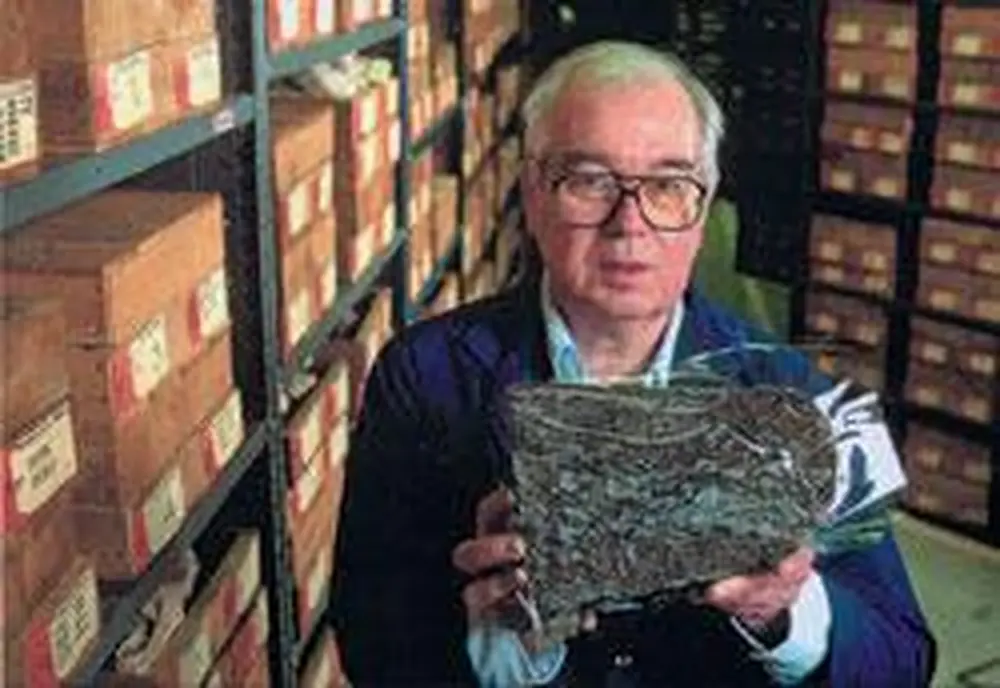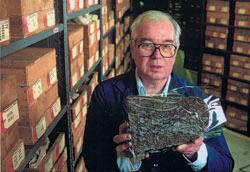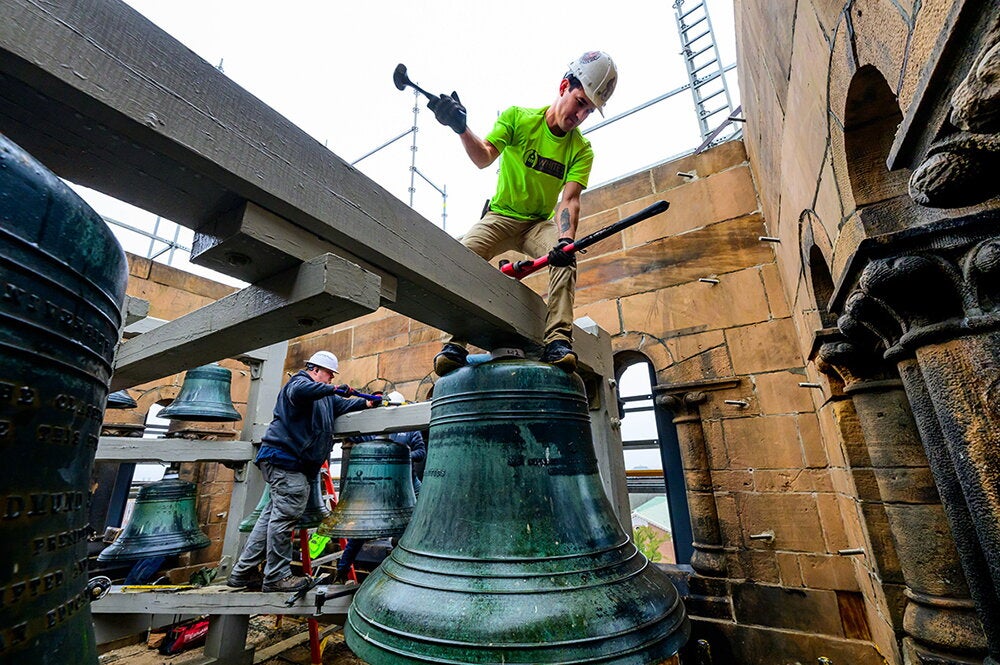

After 30-plus years of teaching, committees, and tenure reviews, professors have earned the break offered by retirement. It's just that a growing number of them don't want to stop.
On a typical weekday, for example, you'll find 76-year-old Tom Phillips in heavy gloves and a lab apron, still examining some of the roughly 50,000 chunks of coal that he's collected during his career. He's a time traveler, he says—certain chunks, or coal balls, contain plant matter from 300 million years ago—and now he's deepening his understanding of the oddities of prehistoric Earth, such as the ancient, towering lycopod trees that grew for 10 to 15 years and then died after releasing their spores.
To be sure, Phillips, an emeritus professor of plant biology and member of the National Academy of Sciences, didn't think his career should go the way of the lycopods once he retired. In fact, being free of prior day-to-day obligations, he sees retirement as a boon to his lifelong research in coal and early plants.
"I can keep my eye on the ball," says Phillips, inside the basement laboratory he still uses at Morrill Hall at the University of Illinois. "The best thing about being retired is I can fully enjoy the chase."
Professors have long been known for continuing their studies into retirement, whether it be in their line of expertise or a new field altogether. Administrators, however, say they're seeing even more retired professors continue the chase, and officials, pleased with the wealth of experience still available, have begun to advocate measures to better include them on campus.
Part of the force behind the trend is simple demographics. Baby boomers are aging and retiring. In 2004, almost 35 percent of professors and other university instructors were age 55 or older, according to a U.S. government study, up from 29.8 percent in 1999.
That trend has shown up at the U of I, too. In 1998, about 54 percent of faculty in the U of I's College of Liberal Arts and Sciences were full professors, or senior in rank. Just 10 years later, full professors make up only 40 percent of the college's more than 700 faculty members, according to administrators. Across the University, 48.8 percent of faculty members were full professors in 1998, compared to 42.6 percent of the roughly 2,000 faculty members in 2008.
Another reason behind the trend is harder to quantify. As Karen Carney, associate dean of humanities and interdisciplinary programs at LAS says, "people are pursuing a more active retirement now," a change that's been noted in the press and elsewhere.
While it's hard to quantify how many emeritus professors choose to remain academically active on and off campus after retirement, it's proving an attractive option, as many who continue to work speak glowingly of being able to explore topics and ideas in a way they've always dreamed of. Nina Baym, an emeritus professor of English at LAS who is widely respected for her study of women's literature, describes uncovering "new knowledge" since she retired in 2004.
"There are still professional obligations" during retirement, Baym says. "Letters of recommendation, reading manuscripts, writing book reviews for journals, etc. So it's not 100 percent ‘off the hook,' but all these things can be done on one's own calendar rather than somebody else's."
Clark McPhail, an emeritus professor of sociology and author of the award-winning monograph, The Myth of the Maddening Crowd, has spent his career studying how people act in large gatherings. After retirement in 1999 he was a Fulbright Senior Research Fellow in England, where he analyzed Scotland Yard videotapes of the Poll Tax Riot and other demonstrations. He still consults police and public officials on holding safe and orderly gatherings, and he still teaches seminars and is writing a book.
He anticipates eventually seeking grants to help analyze roughly 10,000 feet of film he shot of demonstrators in the 1960s and 1970s.
"It's the old saw," he says. "The more you learn the more you know, and the more you realize you don't know…I'm hoping that I'm laying the groundwork for someone down the pike to take what I've done and move forward with it."
McPhail has done much of his post-retirement work off campus, but many at least maintain a presence on campus, and the U of I has responded by trying to include them in operations. The U of I's Graduate College rewrote rules to allow emeritus professors on doctoral student committees for three years after they retired. The change came as an increasing number of students saw one or more of their PhD committee members retire before they received their degree, requiring an exception to the old rule so the committee member could follow the years-long process through.
Accommodating the trend takes place on several levels. The U of I's Department of Plant Biology—Phillips's department—has a policy of making laboratory space available to emeritus professors so long as they're active, says Evan DeLucia, department head and professor of plant biology. This means that people such as Phillips, one of the most renowned professors to emerge from the department, are welcome.
Indeed, administrators have sought to make the most of the trend. Richard Wheeler, dean of the Graduate College, has asked the National Research Council (NRC) to include publications and awards by emeritus professors during the council's assessments of universities. Many other university deans he's spoken to, Wheeler adds, have also said that research and involvement among emeritus professors is growing more common. The NRC ended up implementing Wheeler's suggestion.
Wheeler says this is good news, as many prominent professors are retired from the U of I, and factoring their work into the assessment is beneficial as it is appropriate.
"They really are very much a part of the intellectual community," Wheeler says, even though many retired professors support their own work through their own funding. "It seemed like a good idea to do this."
For emeritus professors, however, the policies welcoming them back to campus can go only so far in addressing the jumble of complications and emotions that come with retirement. While Phillips is happy to continue his work, he misses many of his old colleagues whom he forged his career beside. Now and then one may come back and for fun they'll saw coal balls together, but they're no longer as available.
"Many of these people are retired. That's one of the drawbacks when you get to be my age," Phillips says. "Some of your very best colleagues are retired and no longer come to the campus."
Other emeritus professors who need research funds speak of having a harder time obtaining them from granting agencies. As more face the same quandary, funds have emerged exclusively for emeritus professors.
Baym, for example, received an Emeritus Fellowship in 2007 from the Andrew W. Mellon Foundation to work on a new book, Women Writers of the Old West, 1832-1927, a study of American women who set their works in the American West. The Foundation established the Emeritus Fellowship program in 2003 with the assumption that scholars "will continue to be productive beyond retirement," the Foundation says.
For Baym, the $23,000 grant helps her continue a long career that includes extensive study of female literature and intellect. To the lifelong scholar, however, the grant is only supplemental to her work, and not her reason for pushing on.
"To be perfectly honest," she says, "I'd be doing this anyway."


